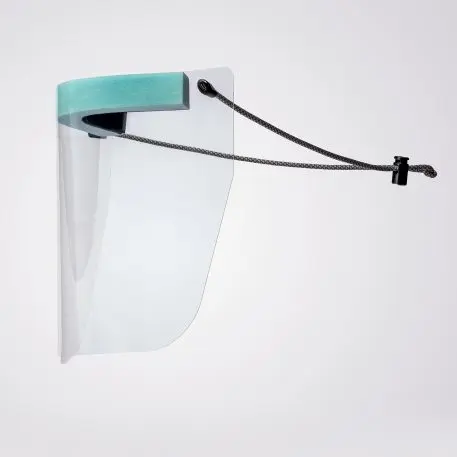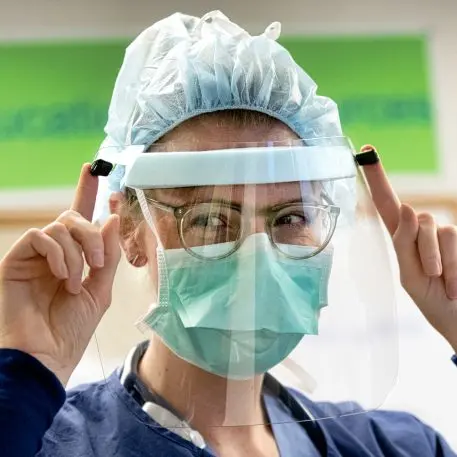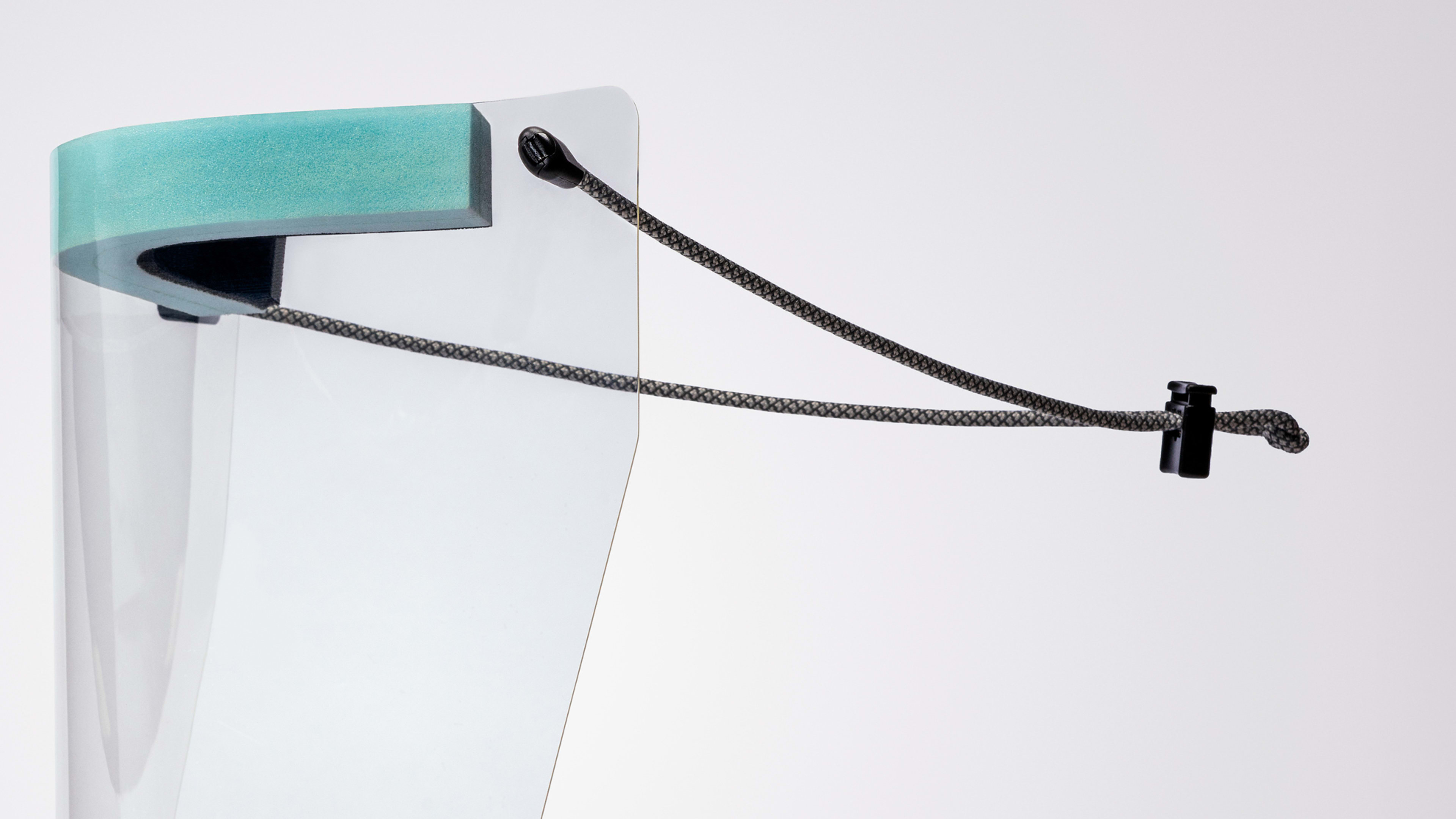It was a Monday morning when Michael Donaghu, Nike’s vice president of innovation, got the call. Nike’s offices had closed the week before, due to the coronavirus, and he was just settling into work-from-home life. Now he was needed back at the office. Nike had agreed to provide personal protective equipment to the local Oregon Health & Science University (OHSU) hospital, but there was one problem: Nike had never built PPE before.
Like Ikea, Apple, Ford, and many other companies, Nike responded to the coronavirus crisis by turning some of its assembly lines over to the production of protective medical gear. To date, Nike has provided 290,000 pieces of medical protection to more than 20 hospitals across the United States, and it has done so by following one key rule: It has to add to the PPE ecosystem, not subtract from existing assembly lines. “We made guidelines for ourselves: Let’s think about how Nike can uniquely help . . . let’s not buy up a bunch of existing solutions that are already in the supply chain somewhere,” explains Donaghu. “How do we solve this problem with the supply chain we have, with materials we’re familiar with, and with the tools we have?”
So donning a mask and gloves alongside his team, he dumped dozens of components onto work tables and started building face shields out of the foams, plastics, and fibers found in Nike apparel. By lunch, they’d created two dozen working prototypes. That afternoon and evening, the most promising gear was tested by nurses at OHSU.
While the average Nike product takes 18 months to go from concept to production, the team managed to get PPE rolling off the assembly line in just two weeks. The efforts required retooling assembly lines and reformulating plastic to churn out PPE in two factories that are thousands of miles apart—all during the COVID-19 lockdown.

Designing the gear
After a brief video meeting that Monday morning, Nike designers assembled at HQ and began building prototypes. “One of the first lessons of product design is, don’t talk about things; make them,” says Donaghu. “Then you see their flaws.”
But how would Nike know the flaws in a face shield? The company brings in athletes, and films them with high-speed cameras to tweak shoe design. So Nike looked for the PPE equivalent. “If OHSU is the team . . . who is the athlete? We asked them to bring in a couple of super users of this product,” says Donaghu. “Within a couple hours that morning, we had a small group from OHSU that came to our studio.” And they had prototypes to look at.
Nike had already determined that, while face shields were typically designed to be disposable, they should probably consider something reusable (with cleaning), given equipment shortages—and if they were reusable, they should be comfortable and adjustable too. When the team from OHSU arrived, they provided a lot more context, explaining they might wear a face shield for data entry one minute, then be giving CPR the next. So they needed to be easy to take on or off, and adjust as needed.
Nike’s improvements were simple, but also notably lacking in existing PPE. They took the elastic drawstring with its push-button cinch from a jacket or pants, and used that to wrap around someone’s head. With one hand, a healthcare provider could loosen or tighten the strap.
The other upgrade was a band that sits against your forehead. Atop a foam sourced from the collars of Nike shoes, Nike added a thin piece of soft, sweat-wicking Dri-Fit fabric found in many of its shirts, which was a hit among the super users, given that most face shields have rough exposed padding against one’s skin.
What the team ultimately developed was basically a Nike shoe, deconstructed for medical workers. The forehead pad is made from the collared padding found in shoes. The cords are from Nike apparel. And the shield itself? That’s actually the thermoplastic polyurethane (TPU) material in a Nike Air sole. But instead of holding an air bubble, it’s flattened and curved around one’s face.
“This was a great project because speed mattered more than anything, so you just didn’t have the luxury [to overthink]. You had to build-test-feedback, build-test-feedback . . . we ran that cycle as many times in a few days as we could,” says Donaghu. “Then it was getting supply partners, government affairs people, supply chain people, and manufacturing management [aligned]. There were 40 to 50 people on a call every day trying to pull this thing together.”

Turning Air into PPE
The design process went smoothly, but getting that TPU face shield just right required some fine-tuning. The biggest piece of feedback nurses had after wearing the Nike PPE was that the face shield wasn’t quite as clear as they wanted it. A production team out of Beaverton, Ore., collaborated with a team out of St. Charles, Mo. “It took us a few days to dial in the recipe for the best clarity,” says Donaghu, but Nike’s supply partner Lubrizol, which supplies Air source material and has donated significantly to this project, helped get the new formulation just right.
By Thursday of that week, the engineering team demanded pencils-down on the design so that the gear could be finalized for production. Nike’s Air production line in Missouri had been closed down for weeks because of the coronavirus, and the company was already working on new policies allowing for social distancing, like redesigning building flows to stop people from bumping into one another. Engineers worked on retooling assembly lines to create the Air TPU face shields, to extrude and cut them to shape.
The team fired up a few lines in Beaverton and St. Charles. With the existing stock of components Nike had, it quickly created tens of thousands of face shields, and components for a related piece of PPE called a PAPR, which is essentially a face shield extended into a whole helmet, complete with a closed oxygen supply.
Intriguingly, the process of ramping up production for PPE allowed Nike’s assembly lines to experiment with new social distancing procedures, offering a test run for manufacturing in the age of COVID-19. “It gave us purpose to go back to work,” says Keith Lambert, VP of global air manufacturing innovation. “And we were able to trial new ways of working to make everyone safe.”
To date, Nike has supplied 290,000 pieces of PPE to hospitals at no charge since its first delivery April 3, and it’s continuing production into the foreseeable future until supply shortages end. The representatives we talked to from Nike insist they have no interest in getting into the PPE business moving forward, like some other companies that are eyeing large government contracts. Instead, it has been a way to serve communities in Portland and Boston where its offices reside. “If we did more [production prototypes], there are a lot of things we could do design-wise for flow of manufacturing, but this was about getting something that worked, taking the lines we had, and tooling them to do something different,” says Lambert. “By us focusing on materials we had, processes we had, and equipment we had, let us go quickly. If we’d changed any one of those things . . . we would have gotten it done but probably too late for the medical community.”
Recognize your brand’s excellence by applying to this year’s Brands That Matter Awards before the early-rate deadline, May 3.
